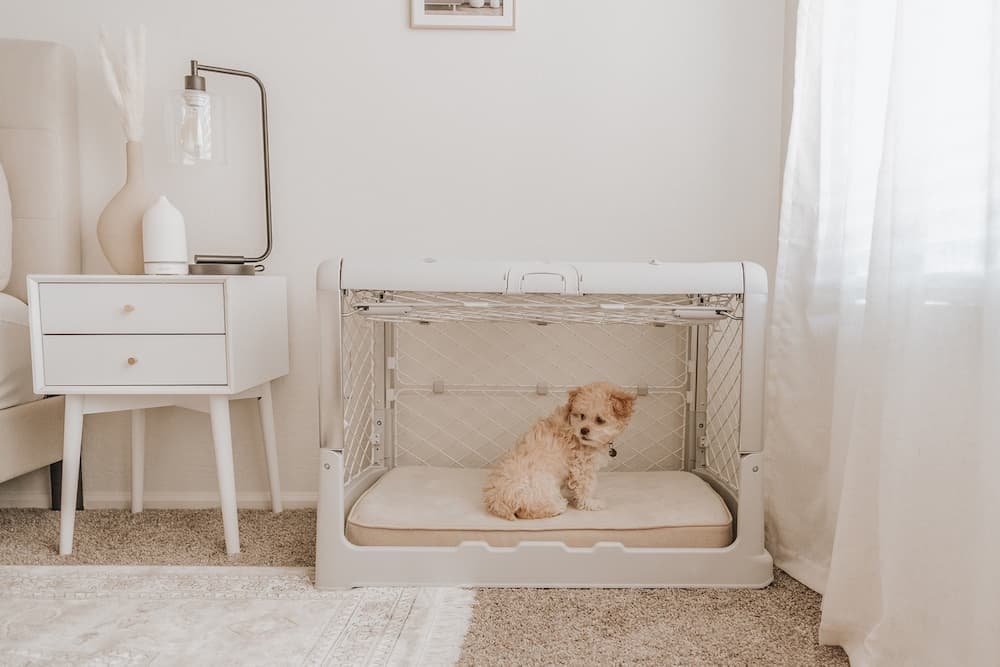Do Dogs Get Carsick?

In short, yes, dogs can get carsick. However, if your dog is reluctant to get in your car, or whines, drools, can’t settle, pants or even vomits while in your car, being carsick isn’t the only possible suspect. Anxiety around travel, or cars specifically, is surprisingly common in dogs. Likewise, a few underlying medical conditions can mimic them both. So what’s a dog parent to do?
The first step is to figure out what’s causing your dog’s discomfort, so you (and your vet) can come up with the right treatment plan. For example, Cerenia is a highly-effective anti-nausea medication that’s FDA-approved to relieve motion sickness in dogs. That’s great news for carsick canines. But if your dog is acting odd due to an injury or infection, it won’t do a thing to relieve their symptoms.
Here’s what you need to know to help your dog get some quick wins and comfy with car travel.
HOW TO SPOT IT: What does car sickness or car anxiety look like in dogs?
The experts have pointed out some pretty specific things to look for, including:
- Reluctance to get in the car
- Anxious behaviors in the car, including but not limited to:
- Drooling
- Panting
- Pacing
- Whining
- Hunched body position
- Tight facial muscles
- Licking
- Circling
- Inability to settle
- Vomiting (sometimes)
It can be pretty heartbreaking to see your dog in a stressful state that is so common with anxiety in cars and even frustrating to listen to them whine. Understanding what your dog is communicating with these behaviors is the first step to figuring out how to help.
Stephanie Gibeault, MSc, CPDT, tells the American Kennel Club, “Although many dogs look forward to riding in the car, other dogs dread the experience and whine, drool or even vomit. This can be due to motion sickness, a previous bad event in the car like an accident, or anxiety about being trapped inside a giant, moving machine.”
Many dogs never get in the car except to go to the vet where they get poked and prodded. (Think of it, if YOU only ever got in the car to go to your doctor, you might not love the sight of four wheels either!) Even a minor repeated association like this can cause anxiety for some dogs.
THINGS TO CONSIDER: Is my dog carsick, anxious, or is something else happening?
The first stop on your pup’s road to recovery is, ironically, a trip to the vet. “This can help to rule out any underlying medical issues that could be mimicking the signs of motion sickness and/or travel anxiety (e.g., pain from a slipped disc or arthritis, an inner or middle ear infection, or high blood pressure),” notes Jason Nicholas, BVetMed, of The Preventive Vet.
If your dog is indeed carsick, a chat with the vet is good anyway. If your vet determines that motion sickness is what’s causing your dog’s distress, they may prescribe Cerenia. This go-to anti-nausea medication for dogs works by blocking a neurotransmitter associated with vomiting. Basically, it targets the brain to ease the belly!

Of course, if your dog physically hurts or is nauseous every time they get in the car, they are probably getting nervous too! So behavior help and changing your pup’s perception of the car is the next step.

FIRST STEPS TO TAKE: My dog is healthy, but still nervous in the car. Now what?
Once you’ve handled the medical, it’s time to handle the mental. We’ve got to change the way your dog looks at the car.
Start early:
Of course, hindsight is always 20/20, right? Noted dog trainer Irith Bloom says it’s important to socialize your dog right when they are still a puppy and take them on frequent car rides. “Use those car rides to go fun places where your puppy gets to experience low-key puppy socialization,” says Irith.
If a fear of the car is already present, shift how they think of it:
Desensitizing your pup to their triggers is very possible in most cases. The experts say to take small steps at your dog’s comfort level to best desensitize their fears, including riding in the car. If you’re not sure what’s triggering the fear (no car sickness or other issues found), identifying why your pup is anxious will help you reduce the fear gradually. Famed dog trainer Victoria Stilwell’s Positively site has some great insight on desensitizing your pup.
Walk with confidence:
“Believe it or not, learning how to walk Fido from one place to the next in a way that makes it clear you know where you’re going is huge,” notes drsophiayin.com. Your dog is insecure, and feeling like someone they trust is confident would be great. Walking timidly toward the car with your dog, or (worse!) while on your phone, can give your dog the wrong signal. Check out more about walking with confidence from Sophia Yin, DVM, MS.
Don’t force your dog into the car:
Cathy Madson, MA, CBCC-KA, CPDT-KA, is a certified dog trainer who suggests that you avoid forcing your dog to get in the car. “Instead you want them to choose to go towards the open door on their own and then reward them.” By rewarding the behavior you want and letting your dog move towards the car on their own, confidence may increase.
Take time and make it fun:
Getting a dog afraid to travel to being okay in the car can take some time. Tufts School of Veterinary Medicine’s newsletter suggests, “You may need to play with your dog, sweet-talk her, or offer treats within sight of the vehicle, slowly setting the stage for her to let her guard down about the car in general.”
Consider how your dog is when alone:
It’s hard to guarantee you’ll be in the car at all times with your dog, especially on long trips when you may need to run into the gas station to pay for your tank. Andrea Arden, CPDT and founder of Andrea Arden Dog Training tells Petfinder it’s best for your dog to practice being left alone in a small space to help them feel more comfortable in the car: “Inside your home, tether him to a stable object a foot or two away from you for several minutes. Gradually increase your distance from him over the course of a week or so until you can leave the room without concern.” The next step is to do the same thing, but with your dog in the car. Practice opening and closing the door and other actions without leaving the car first, then slowly increase your distance.
If the above suggestions don’t work, it may be time to seek out a certified dog trainer for more specific support or schedule time to talk to your vet about what else you can try.

HOW TO GET HELP: Questions for veterinary or behavior professionals
First and foremost, rule out medical reasons that could be making your dog anxious or uncomfortable in the car. If you’ve done that and are struggling, it’s a good idea to put a call in to a local positive-reinforcement-based trainer. Things you might ask are:
- How do I know what my dog’s afraid of when we travel?
- How can I make my car time with my dog more fun?
- How do I stop (this) specific behavior without punishing my dog? (Think whining and barking!)
- Given my dog’s breed and age, how often do I really need to stop for potty breaks?
ADDITIONAL RESOURCES:
My Dog Hates Riding in the Car from Vetstreet
Overcoming Your Dog’s Travel Anxiety from Tufts School of Veterinary Medicine
Canine Car Safety from Geico









